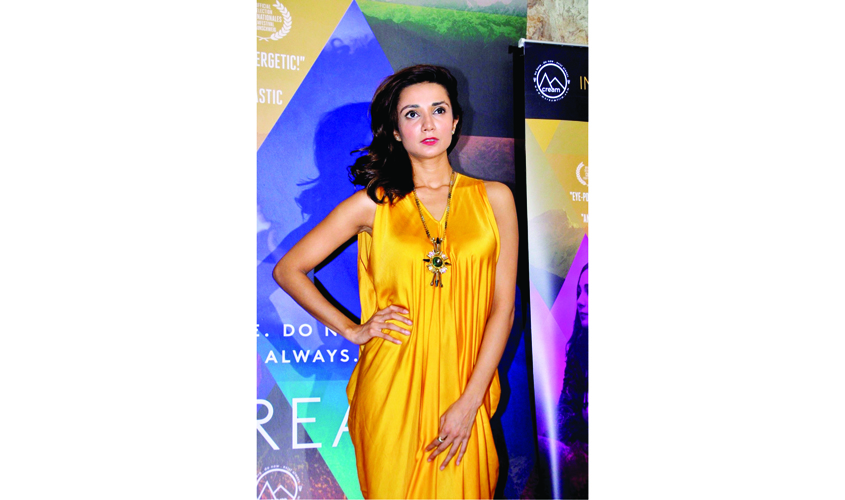Ira, too, feels that though the plays are divided far apart in distance and time, there are strong parallels. She talks to Guardian 20 about Ibsen’s play, the inception of its characters, and the creative ground it shares with Aadhe Adhure.
Q. How many times have you performed this play and how long have you spent in rehearsals?
A. The first performance was in Mumbai at Prithvi Theatre on 6 October and this is our second performance. We have been rehearsing and preparing the play for about 45 days. We started by practicing at our director, Pushan Kripalani’s house and then as the production caught speed we got investors in form of Ila Arun’s production house.
Q. Nora Helmer represents the women of 1th-century Europe. How much do you think her character resonates with you, and with other contemporary women?
A. It resonates a lot because even though a lot has changed since the 1870s, men and women are still not equal. The very first scene itself makes it clear that there is a power dynamic in Nora and Torvald’s marriage, one that we can still see in a lot of marriages all around. It was this power dynamic that made Nora hide certain sides of her character from her husband which ultimately becomes the tragedy of her life. This is still very much prevalent and we all expose or hide ourselves according to people and relationships. It might be healthy sometimes but at other times it grows toxic such as what we see in the play. And why do people hide themselves or show just one side? Well, sometimes that is the only choice they are left with.
Q. Can Nora be called a younger version of Savitri from Aadhe Adhure?
A. In many ways, yes. There are certain similarities even though these women are very different. Nora could be a younger version of Savitri, as she is more idealistic and even though she doesn’t have much to go on, she hopes and believes in her husband’s love. Whereas Savitri is a grown woman, sole bread winner, working all hours to make ends meet for herself and her children. The life she has led has made her more practical, cynical and almost paranoid. But they both are victims of the patriarchal world.
[Savitri is the protagonist of Aadhe Adhure played, in its latest stage adaptation by Lillete Dubey.]
“Even though a lot has changed since the 1870s, [when Ibsen’s play first came out], men and women are still not equal. The play’s very first scene makes it clear that there is a power dynamic in Nora and Torvald’s marriage, one that we can still see in a lot of marriages all around.”
Q. Mrs. Linde, the other female character in Ibsen’s play, like Nora’s husband, believes in hard work and honesty, but, unlike the husband, he does not take such a black-and-white view of Nora’s mistakes. Why do you think that is?
A. Mrs. Linde is a very different woman from Nora. She was not well-off from childhood and didn’t have a love marriage. She married because she needed to marry to improve her family’s situation financially. And even after that she had to face much trouble in life. So she herself had made many compromises in life. She is in many ways more mature than both Nora and her husband. All this might have made her understand Nora’s actions but she was very adamant that Nora shouldn’t hide anything from Torvald. She helps Nora only on that condition.

Q. There is a triangular relation operating in this play, between Nora, Torvald and Dr. Rank. How do you interpret that? And is Nora and Dr. Rank’s relationship similar to Savitri and Jagmohan’s relationship in Aadhe Adhure?
A. This is a very interesting feature of the play. Such a situation
Jagmohan, on the other hand, is totally hidden from Savitri’s family. They know about him but they have never accepted him or his relationship with their mother. His visits to the house are a total trigger for Savitri’s husband. His presence is totally opposite to what Dr. Rank’s presence in the Helmer house represents. Dr. Rank is, in a way, helping them be together, whereas Jagmohan is just making things worse.
Q. How many times have you performed the play Aadhe Adhure? That play is disturbingly open-ended and there is a lot of discussion as to whose fault it was that the family had become what it did. Whose fault do you think it was?
A. I have performed Aadhe Adhure just under a hundred times all over the world. The play is a very complicated one. At some level it is the whole family’s fault that things have gone so wrong with them. It is a portrayal of a dysfunctional family, when one member of the family gets addicted, soon it affects the whole family. The father in Aadhe Adhure is a total addict, he is used to people helping him and has been used to it for so long that he refuses to change now. This is why his family gets so pulled into it and bears the brunt of that.

